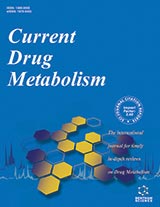摘要
伊马替尼、第二代和第三代ABL癌基因蛋白质络氨酸激酶抑制剂(TKI)(也即达沙替尼、尼龙替尼、伯舒替尼和泊那替尼)的使用使得CML(慢性粒细胞白血病)在部分案例中成为临床上一个可控制和治愈的疾病。TKI治疗CML急变也变成了一个罕见的事件,然而,疾病仍然在部分TKI治疗无效或者对多种TKIs产生耐药的患者发展。过去的几年,人们开始了解到BSRAB1基因不是单独推动疾病的发生、维护和发展,事实上似乎骨髓(BM)微环境产生的信号和细胞自治BCRANL1依赖激酶的基因和表观遗传的改变都有助于一下几点:1.静态白血病干细胞的持久性(LSC)储层2.先天或获得性TKIs耐药性3.发展成致病的急性危急阶段。在此本文综述了复杂网络中的异常情况,但是微调、生存、增殖和自我更新的信号是由白血病祖细胞、间质细胞、免疫细胞、代谢微环境(如缺氧)产生,为提高LSC的维护和急变转换。
关键词: 干细胞、微环境、慢性髓细胞样白血病、造血干细胞
图形摘要
Current Drug Targets
Title:Cellular and Molecular Networks in Chronic Myeloid Leukemia: The Leukemic Stem, Progenitor and Stromal Cell Interplay
Volume: 18 Issue: 4
关键词: 干细胞、微环境、慢性髓细胞样白血病、造血干细胞
摘要: The use of imatinib, second and third generation ABL tyrosine kinase inhibitors (TKI) (i.e. dasatinib, nilotinib, bosutinib and ponatinib) made CML a clinically manageable and, in a small percentage of cases, a cured disease. TKI therapy also turned CML blastic transformation into a rare event; however, disease progression still occurs in those patients who are refractory, not compliant with TKI therapy or develop resistance to multiple TKIs. In the past few years, it became clear that the BCRABL1 oncogene does not operate alone to drive disease emergence, maintenance and progression. Indeed, it seems that bone marrow (BM) microenvironment-generated signals and cell autonomous BCRABL1 kinase-independent genetic and epigenetic alterations all contribute to: i. persistence of a quiescent leukemic stem cell (LSC) reservoir, ii. innate or acquired resistance to TKIs, and iii. progression into the fatal blast crisis stage. Herein, we review the intricate leukemic network in which aberrant, but finely tuned, survival, mitogenic and self-renewal signals are generated by leukemic progenitors, stromal cells, immune cells and metabolic microenvironmental conditions (e.g. hypoxia) to promote LSC maintenance and blastic transformation.
Export Options
About this article
Cite this article as:
Cellular and Molecular Networks in Chronic Myeloid Leukemia: The Leukemic Stem, Progenitor and Stromal Cell Interplay, Current Drug Targets 2017; 18 (4) . https://dx.doi.org/10.2174/1389450117666160615074120
| DOI https://dx.doi.org/10.2174/1389450117666160615074120 |
Print ISSN 1389-4501 |
| Publisher Name Bentham Science Publisher |
Online ISSN 1873-5592 |
 83
83 2
2 1
1
- Author Guidelines
- Bentham Author Support Services (BASS)
- Graphical Abstracts
- Fabricating and Stating False Information
- Research Misconduct
- Post Publication Discussions and Corrections
- Publishing Ethics and Rectitude
- Increase Visibility of Your Article
- Archiving Policies
- Peer Review Workflow
- Order Your Article Before Print
- Promote Your Article
- Manuscript Transfer Facility
- Editorial Policies
- Allegations from Whistleblowers
Related Articles
-
Calcium Homeostasis and Kinetics in Heart Failure
Medicinal Chemistry Effects of ACE-Inhibitors and Angiotensin Receptor Blockers on Inflammation
Current Pharmaceutical Design High-Density Lipoprotein and Low-Density Lipoprotein Subfractions in Patients with Chronic Kidney Disease
Current Vascular Pharmacology Discovery of MINC1, a GTPase-Activating Protein Small Molecule Inhibitor, Targeting MgcRacGAP
Combinatorial Chemistry & High Throughput Screening Anti-cancer Effects of Curcumin on Head and Neck Cancers
Anti-Cancer Agents in Medicinal Chemistry A Review of the Therapeutic Benefits of Moringa oleifera in Controlling High Blood Pressure (Hypertension)
Current Traditional Medicine Role of Serum and Glucocorticoid-Inducible Kinase (SGK)-1 in Senescence: A Novel Molecular Target Against Age-Related Diseases
Current Medicinal Chemistry Von Willebrand Factor: Drug and Drug Target
Cardiovascular & Hematological Disorders-Drug Targets Pharmacovigilance Assessment of Cardiac Implications of Nicotine Replacement Therapy Among Smokers
Current Drug Safety Morphine as a Potential Oxidative Stress-Causing Agent
Mini-Reviews in Organic Chemistry Intra-Renal Hemodynamic Changes After Habitual Physical Activity in Patients with Chronic Kidney Disease
Current Pharmaceutical Design Use and Safety of Calcium Channel Blockers in Obstetrics
Current Medicinal Chemistry Physiological and Non-Redundant Functions of PKC Isotypes in T Lymphocytes
Current Immunology Reviews (Discontinued) Agonist-Trafficking and Hallucinogens
Current Medicinal Chemistry Gene Therapy for Ischemic Brain Diseases
Current Gene Therapy CAM Use in Pediatric Oncology
Current Pediatric Reviews Antioxidant Agents in Alzheimers Disease
Central Nervous System Agents in Medicinal Chemistry Novel Targets for Antiinflammatory and Antiarthritic Agents
Current Pharmaceutical Design Cerebral White Matter Lesions, Risk of Stroke and Cerebrovascular Protection with Angiotensin Receptor Blockers
Current Drug Therapy Hypereosinophilic Syndrome, Churg-Strauss Syndrome and Parasitic Diseases: Possible Links between Eosinophilia and Thrombosis
Current Vascular Pharmacology


























